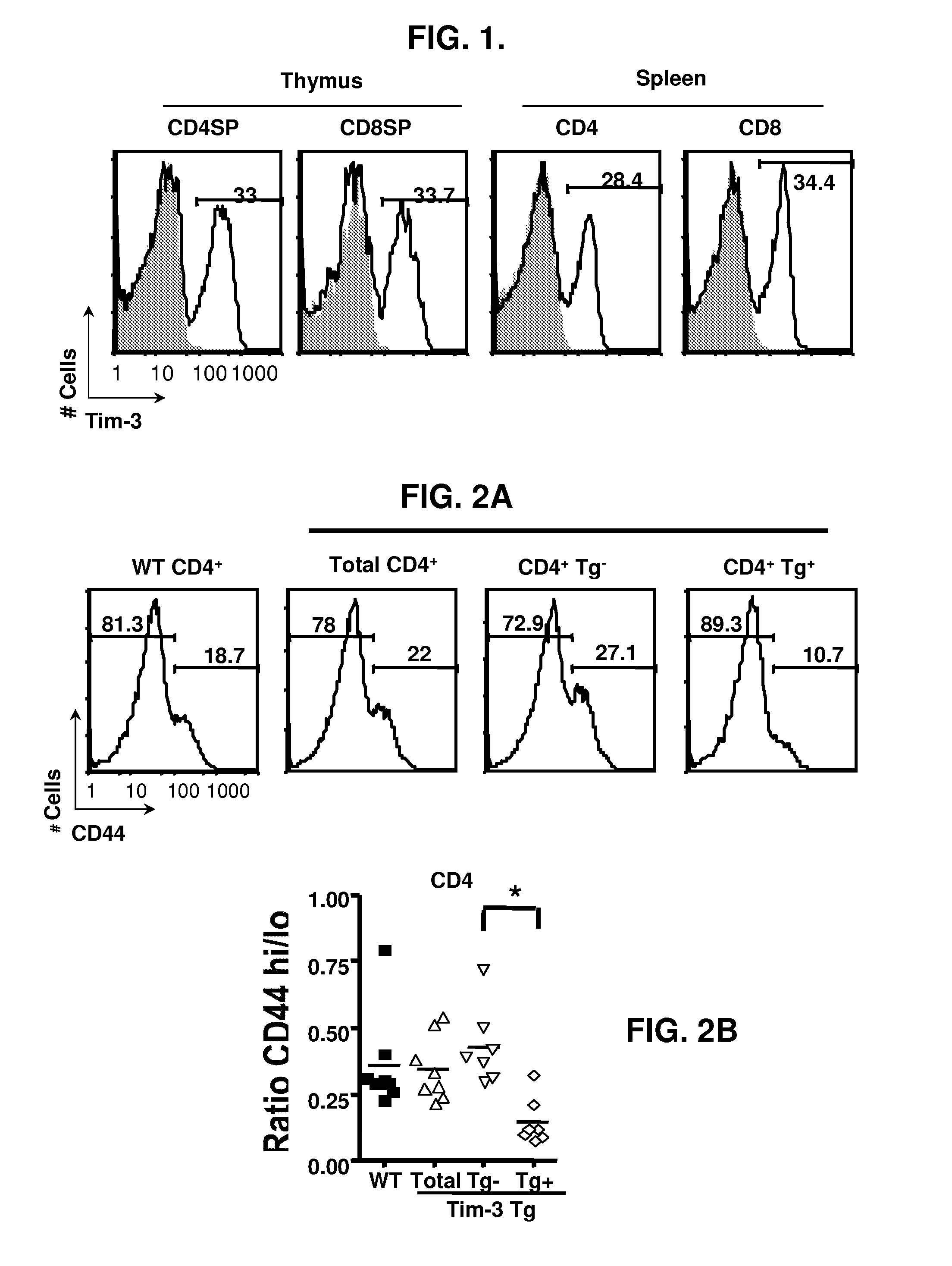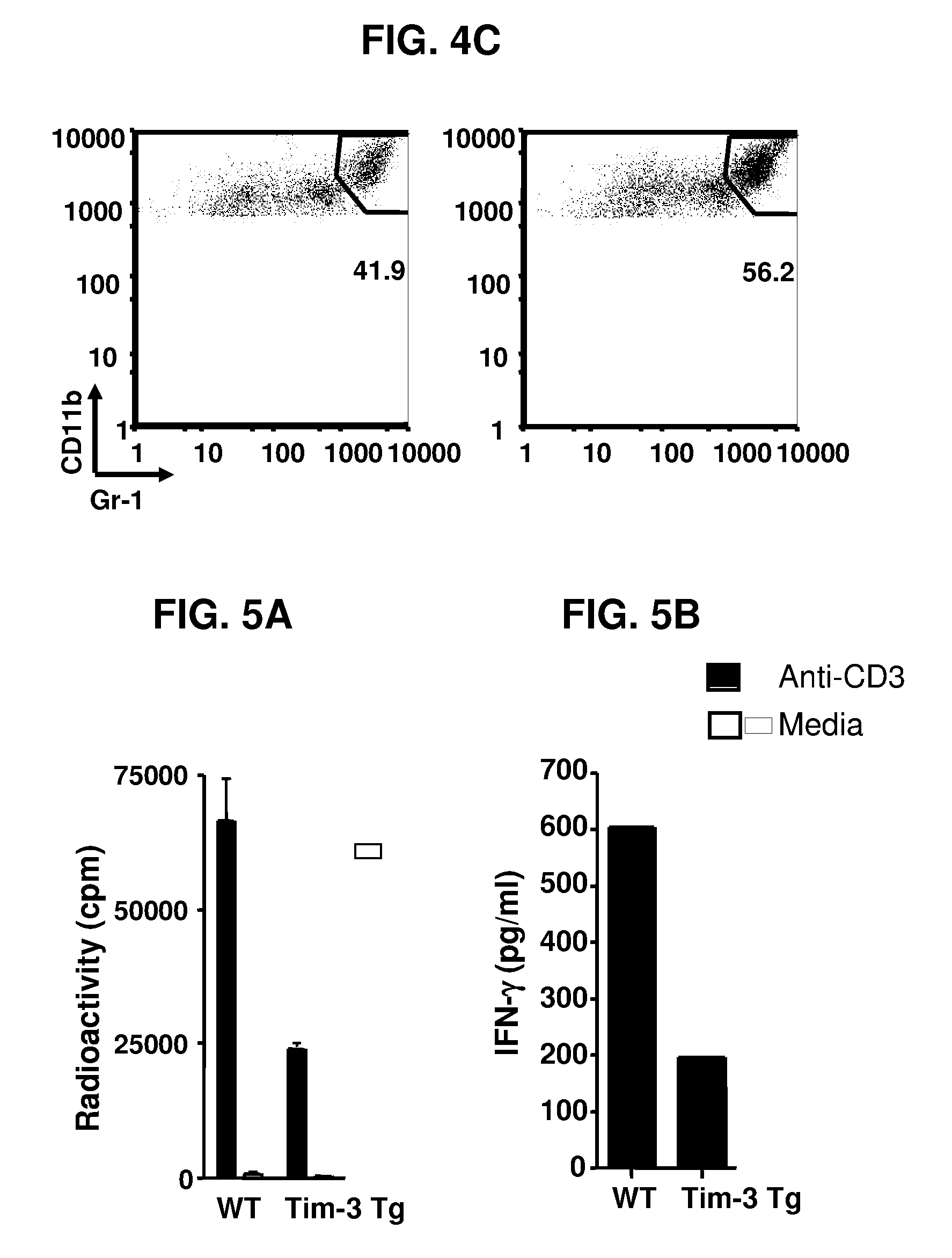Methods for modulating a population of myeloid-derived suppressor cells and uses thereof
a technology of suppressor cells and myeloids, applied in the field of methods for modulating a population of myeloid-derived suppressor cells, can solve the problems of many cancer immunotherapies failures, and achieve the effects of relieving the suppression of the immune system, preventing the expansion of mdscs, and easing symptoms
- Summary
- Abstract
- Description
- Claims
- Application Information
AI Technical Summary
Benefits of technology
Problems solved by technology
Method used
Image
Examples
example
Materials and Methods
[0191]Transgenic Mice—For the generation of Tim-3 transgenic mice the full-length cDNA of Tim-3 (Balb / c strain) was cloned into the human CD2 expression cassette 15 and the construct micro-injected directly into C57BL / 6 oocytes. Galectin-9 transgenic 18 and Tim-3− / −12,14 mice were described previously. All animals were housed according to the guidelines established by the Harvard Committee on Animals.
[0192]Flow Cytometry—Single cell suspensions from thymus, lymph node or spleen were prepared and stained with the indicated antibodies. Spleens were subjected to digestion with collagenase D (Roche). All flow cytometry data were collected on a BD FACS Calibur (BD Biosciences) and analyzed with FlowJo Software (Tree Star).
[0193]In vitro T cell proliferation and measurement of cytokines—Lymphocytes were cultured in triplicate with soluble anti-CD3 in the presence of irradiated antigen presenting cells. For some experiments, CD11b+CD11c− cells were sorted by flow cytom...
PUM
| Property | Measurement | Unit |
|---|---|---|
| pH | aaaaa | aaaaa |
| IFN-γ production | aaaaa | aaaaa |
| frequency | aaaaa | aaaaa |
Abstract
Description
Claims
Application Information
 Login to View More
Login to View More - R&D
- Intellectual Property
- Life Sciences
- Materials
- Tech Scout
- Unparalleled Data Quality
- Higher Quality Content
- 60% Fewer Hallucinations
Browse by: Latest US Patents, China's latest patents, Technical Efficacy Thesaurus, Application Domain, Technology Topic, Popular Technical Reports.
© 2025 PatSnap. All rights reserved.Legal|Privacy policy|Modern Slavery Act Transparency Statement|Sitemap|About US| Contact US: help@patsnap.com



